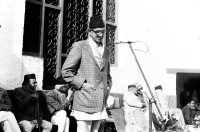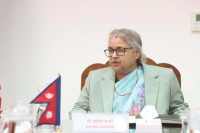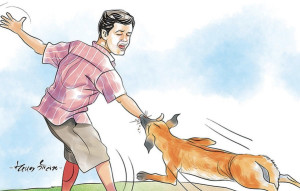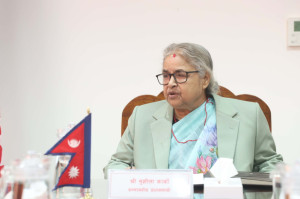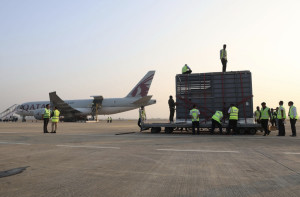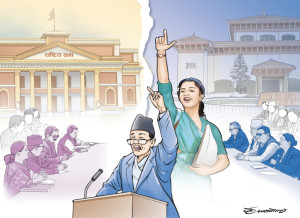Tue, Jan 6, 2026
Columns
Madhesh politics at the crossroads
To guide Madhesh toward a moderate political path, engaging with the people is essential.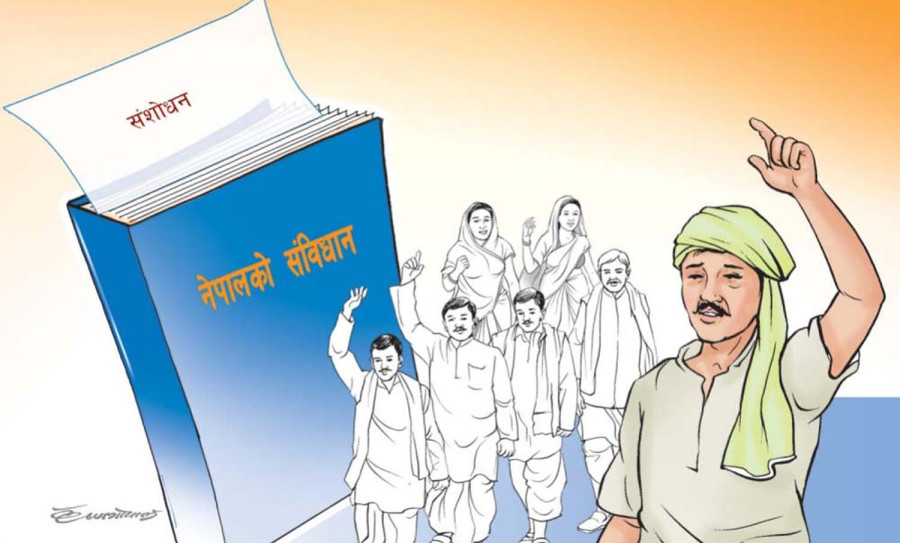
bookmark
Chandrakishore
Published at : August 6, 2025
Updated at : August 7, 2025 07:12
The ruling power, post-promulgation of the constitution, instead of addressing the anger and pain of Madhesh, saw it as an opportunity for a return to a politics of convenience. There was no firm resolution to resolve the deprivation faced by the region. Even the limited processes outlined in the constitution were ignored by the constitution-making parties. The aspirations and sentiments of Madhesh were devalued. The dajutantra (the hill-male-dominated leadership of major parties) became so enthused that they got trapped in an echo chamber of their own making.
By acknowledging that Madhesh has its own identity with distinct expressions and narratives, we recognise the voice of Madhesh. What Kathmandu cares about, Madhesh cares about too, but Madhesh also keeps a meticulous account of what Kathmandu takes an interest in regarding Madhesh. The perception of Madhesh as an aarko (the other) entity permeates down to the grassroots. The power-driven circles are so engrossed in their manipulative tactics that society and literature nourished by them have become overwhelmingly dominant, leaving Madhesh as the aarko even in the post-constitution era.
At this juncture, Madheshi forces seem to have set aside their individual “ego” and initiated dialogue and cooperation. Until recently, sitting together and forming a shared perspective on common concerns seemed nearly impossible. But now, they have formed the “Federal Democratic Front”. They are publicly expressing unified views on contemporary issues and have launched a public awareness campaign about the current political situation, starting from Kathmandu and aiming to cover various cities in Tarai. This front includes parties, whether in power or not, “committed to the empowerment of marginalised communities, striving to make the Nepali state inclusive and advocating for effective provincial practices”.
There’s an interpretation that the third Madhesh movement during the constitution-making process concluded without any resolution. However, the constitution-making forces viewed it as a successful event. Under their own redefined standards of success, those forces believed that the Madhesh agenda was diminished. This event endangered the protection of deprived rights and fragmented the unity of Madheshi forces. A significant shift in the dominant perspective towards Madhesh can be observed before and after the promulgation of the constitution. Madheshi parties, which abandoned the movement to join electoral politics one after another, gradually became mere political palanquin-bearers for the ruling power without realising it.
The language, grammar, idioms, tone and slogans of social justice sparked by the Madhesh movement were sidelined. The slogans and wall writings inspired by identity-based politics faded, and these struggling forces failed to recognise the changes in their own conduct and character. The ongoing Madhesh dialogue, at the very least, is holding a mirror to the “messiahs” or self-proclaimed saviours of Madhesh. Also, some are hoping this dialogue will create new grammar for national politics.
Writer Uday Prakash writes, “They are scared because where they have to go, the footprints are already made”. This fits the “messiahs” perfectly. How will Madhesh navigate this framework? After all, the Madheshi people have supported three movements in less than a decade. The front’s plan to engage in public dialogue is a bold step. When you reach out to the people, the conversation isn’t one-sided. This is an opportunity to understand what the people of Madhesh truly want.
When a particular class within a country tries to impose its superiority on others, implementing hegemonic values in the name of national discipline, it rewards those who comply and suppresses those who argue with logic and reason. In such a scenario, marginalised communities, pushed to the edges, create a mythical world where their superiority is self-evident. Thus, the myths of the ruling class come face-to-face with the myths of marginalised communities.
To this end, all sides begin searching for the distinctiveness of their traditions in real or imagined histories. Gradually, the channels that enable communication between different sides become ineffective. The current efforts to stir momentum in Madhesh are driven by the psychology of isolation caused by past communication breakdowns. The legitimate aspirations raised by Madheshi and all marginalised people are striving to rise with the same force as Newton’s laws of motion.
When Madheshi forces weaken, even the Madheshi faces within major parties get sidelined. These parties now lack individuals who can speak the ground reality to counter the intentions of their leaders. Meanwhile, those who manage to secure a foothold in power by bowing down are repeatedly sidelined, lured, or placated by the power structure, which continues to study and manipulate Madhesh’s socio-political chemistry. In this, the “messiahs”, focused solely on being visible in the government, forgot their original goals: Ending decades of misgovernance, initiating a fresh start in Madhesh, fulfilling the long-awaited social rebellion, and dismantling centuries-old internal colonialism marked by inequality, exploitation and discrimination.
Now, they’ve begun chanting the tune of unity again for their survival. The Madheshi people and their issues are always intertwined. Whenever a force shows resolve to realise their dreams, it gains the community’s support. Madhesh has some longstanding issues, with new ones added. When the aspirations, challenges and opportunities of the common Madheshi are raised, then people extend their support too.
The tendency to treat Madhesh as a security-threatened region for the Nepali state and act accordingly remains unchecked, with ongoing distress. The current stir among Madheshi forces is not enough on its own. How can one trust that their unity won’t lead to another compromise? What is the true intent of this unity? Can old slogans and leadership address today’s crises? Is this the last resort to survive the upcoming political maze? Answering these requires courage.
The biggest challenge for political leadership today is regaining lost credibility and freeing itself from messiah-like posturing. This is the time to end “messiah” politics in Madhesh. The Madhesh of today seeks not a messiah but a mitra (friend) who thinks, understands and struggles like them. To ensure economic and social justice for all regions, communities, castes, classes and genders in the diverse Madhesh.
The ruling power is closely watching this. The efforts toward unity may falter—who knows where? Post the third Madhesh movement, this dialogue is a rare opportunity for self-reflection. Open conversation in the current state acts like medicine. Madhesh politics stands at a crossroads. To guide it towards a moderate political path, engaging with the people is essential. Listening to them with an open heart and mind is crucial. How to move forward? The light of the lantern in the darkness will emerge from such public awareness campaigns.
But if public awareness becomes mere leaders’ speeches or cheap populism, then people will be disappointed again. Those who don’t listen to the people and who try to turn the voices of the grassroots into their political product will be rejected again. Other parties also hold political programmes like padyatras and public awareness campaigns in Madhesh. The front must ensure its activities stand out distinctly.
Most Read from Columns
Editor's Picks
E-PAPER | January 06, 2026
×




 16.4°C Kathmandu
16.4°C Kathmandu

